#science and technology
Text
"A team of researchers at Washington University in St. Louis has developed a real-time air monitor that can detect any of the SARS-CoV-2 virus variants that are present in a room in about 5 minutes.
The proof-of-concept device was created by researchers from the McKelvey School of Engineering and the School of Medicine at Washington University...
The results are contained in a July 10 publication in Nature Communications that provides details about how the technology works.
The device holds promise as a breakthrough that - when commercially available - could be used in hospitals and health care facilities, schools, congregate living quarters, and other public places to help detect not only the SARS-CoV-2 virus, but other respiratory virus aerosol such as influenza and respiratory syncytial virus (RSV) as well.
“There is nothing at the moment that tells us how safe a room is,” Cirrito said, in the university’s news release. “If you are in a room with 100 people, you don’t want to find out five days later whether you could be sick or not. The idea with this device is that you can know essentially in real time, or every 5 minutes, if there is a live virus in the air.”
How It Works
The team combined expertise in biosensing with knowhow in designing instruments that measure the toxicity of air. The resulting device is an air sampler that operates based on what’s called “wet cyclone technology.” Air is sucked into the sampler at very high speeds and is then mixed centrifugally with a fluid containing a nanobody that recognizes the spike protein from the SARS-CoV-2 virus. That fluid, which lines the walls of the sampler, creates a surface vortex that traps the virus aerosols. The wet cyclone sampler has a pump that collects the fluid and sends it to the biosensor for detection of the virus using electrochemistry.
The success of the instrument is linked to the extremely high velocity it generates - the monitor has a flow rate of about 1,000 liters per minute - allowing it to sample a much larger volume of air over a 5-minute collection period than what is possible with currently available commercial samplers. It’s also compact - about one foot wide and 10 inches tall - and lights up when a virus is detected, alerting users to increase airflow or circulation in the room.
Testing the Monitor
To test the monitor, the team placed it in the apartments of two Covid-positive patients. The real-time air samples from the bedrooms were then compared with air samples collected from a virus-free control room. The device detected the RNA of the virus in the air samples from the bedrooms but did not detect any in the control air samples.
In laboratory experiments that aerosolized SARS-CoV-2 into a room-sized chamber, the wet cyclone and biosensor were able to detect varying levels of airborne virus concentrations after only a few minutes of sampling, according to the study.
“We are starting with SARS-CoV-2, but there are plans to also measure influenza, RSV, rhinovirus and other top pathogens that routinely infect people,” Cirrito said. “In a hospital setting, the monitor could be used to measure for staph or strep, which cause all kinds of complications for patients. This could really have a major impact on people’s health.”
The Washington University team is now working to commercialize the air quality monitor."
-via Forbes, July 11, 2023
-
Holy shit. I know it's still early in the technology and more testing will inevitably be needed but holy shit.
Literally, if it bears out, this could revolutionize medicine. And maybe let immunocompromised people fucking go places again
Also, for those who don't know, Nature Communications is a very prestigious scientific journal that focuses on Pretty Big Deal research. Their review process is incredibly rigorous. This is an absolutely HUGE credibility boost to this research and prototype
#covid#covid 19#pandemic#plague#rsv#influenza#the flu#science and technology#medical research#medical technology#biochemistry#immunology#good news#hope#hope posting
6K notes
·
View notes
Text
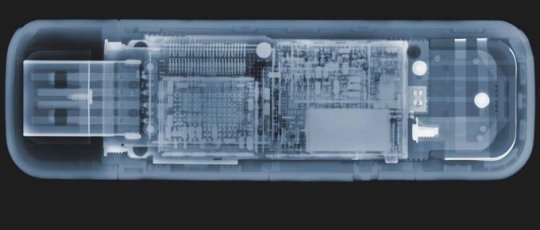
Does a USB drive get heavier as you store more files on it?
Nope. Paradoxically (and theoretically), the more you save on a flash drive, the lighter it gets.
USB drives use Flash memory, which means the the ones and zeros of the data are stored on transistors.
When you save data, a binary zero is set by charging the float gate of the transistor, and a binary one is set by removing the charge.
To charge it, we add electrons, and the mass of each electron is 0.00000000000000000000000000091 grams.
This means that an empty USB drive (which mostly holds zeros) weighs more than a full USB drive (which has ones and zeros). Add data, reduce the weight.
#usb charger#usb port#usb cable#usb#technews#minimal techno#technoblade#technology#tech magic#tech memes#science and technology#science acumen#scientific illustration#scifi#science#the glass scientists#mad scientist#computer science#computer accessories#mobile application development#mobile app development
967 notes
·
View notes
Text

In the autumn of 1883, a paper in the nation's capital reported that "an Iowa woman has spent 7 years embroidering the solar system on a quilt" — to teach astronomy in an era when women could not attend college. Her story.
#Women's History Month#women's history#astronomy#craft#quilting#space#science#science and technology#history and literature#culture and society
305 notes
·
View notes
Text
Less technology used for evil, more of this shit
vimeo
#hope posting#cyborg#cybernetics#transhumanism#disability#physical disability#actually disabled#biopunk#cyberpunk#not an action#Vimeo#science and technology#art#I don't even know what to call this kind of art but this IS art#experimental art
196 notes
·
View notes
Text

Via print:

#art#scifi#cyberpunk#digital art#aesthetic#science fiction#sci fi#scifiart#futuristic#scifi art#scifi aesthetic#sciencefiction#science fiction art#science and technology#snow#winter#robot art#cybernetic#cyber aesthetic#cyberpunk aesthetic#cyberpunk art#mecha art#sci fi and fantasy#scififantasy#sovietwave#digital artist#digital drawing#digital painting#digital illustration#not my art
246 notes
·
View notes
Text
Charlie Rose: Listen to this, I hate to read too much, but this is, it's almost like they've been reading your book. This is from the New York Times for Friday May 24. "Americans flunk science, a study finds."
"Less than half of American adults understand that the Earth orbits the Sun yearly, according to a basic science survey. Nevertheless, there is enthusiasm for research, except in some fields like genetic engineering and nuclear power that are viewed with suspicion.
Only about 25 percent of American adults got passing grades in a National Science Foundation survey of what people know about basic science and economics."
I mean, this is singing your song isn't it?
Carl Sagan: Well, it's certainly what I'm talking about in "Demon-Haunted World." My feeling, Charlie, is that it's not that pseudoscience and superstition and new-age so-called beliefs and fundamentalist zealotry are something new. They've been with us for as long as we've been human. But we live in an age based on science and technology with formidable technological powers.
Rose: Science and technology are propelling us forward at accelerating rates.
Sagan: That's right, and if we don't understand it - and by we, I mean the general public - if it's something that, oh I'm not good at that, I don't know anything about it, then who is making all the decisions about science and technology that are gonna determine what kind of future our children live in? Just some members of Congress? But there's no more than a handful of members of Congress with any background in science at all. And the Republican Congress has just abolished its own office of Technology Assessment, the organization that gave them bipartisan competent advice on science and technology. They say, we don't want to know don't tell us about science and technology.
Rose: Surprising because Gingrich is genuinely interested, I think.
Sagan: He is, no question.
Rose: ... you know out of his own intellectual curiosity. Does the President still have a science adviser, at the White House?
Sagan: He does, he does, John Given. And the Vice President is scientifically literate, yes.
Rose: He's well known for being scientifically-- a science maven. I mean, you blast them all. Creationists, Christian Scientists who you say would rather allow their children to suffer than give them insulin or antibiotics. Astrologers come in for particular scorn on your part.
Sagan: Well, I wouldn't say scorn, just derision.
Rose: A more generous version of scorn. But what's the danger of all this? I mean, you know, this is not the thing--
Sagan: There's two kinds of dangers. One is what I just talked about, that we've arranged a society based on science and technology in which nobody understands anything about science and technology. And this combustible mixture of ignorance and power, sooner or later, is gonna blow up in our faces. I mean, who is running the science and technology in a democracy, if the people don't know anything about it.
And the second reason that I'm worried about this is that science is more than a body of knowledge. It's a way of thinking, a way of skeptically interrogating the universe with a fine understanding of human fallibility. If we are not able to ask skeptical questions, to interrogate those who tell us that something is true, to be skeptical of those in authority, then we're up for grabs for the next charlatan, political or religious, who comes ambling along. It's a thing that Jefferson laid great stress on. It wasn't enough, he said, to enshrine some rights in a constitution or a bill of rights. The people had to be educated and they had to practice their skepticism and their education. Otherwise, we don't run the government, the government runs us.
#Carl Sagan#Charlie Rose#science#technology#science and technology#The Demon Haunted World#religion is a mental illness
44 notes
·
View notes
Text
Fritz Lang's METROPOLIS (1927)

#films#filmgifs#movies#movie gifs#moviegifs#cinema#silent film#silent movies#silent era#silent cinema#science fiction#science and technology#scifi#sci fi#retro scifi#sci fi film#1920s#retro futurism#fritz lang#metropolis#metropolis 1927#classic film#german film#german expressionism
40 notes
·
View notes
Text
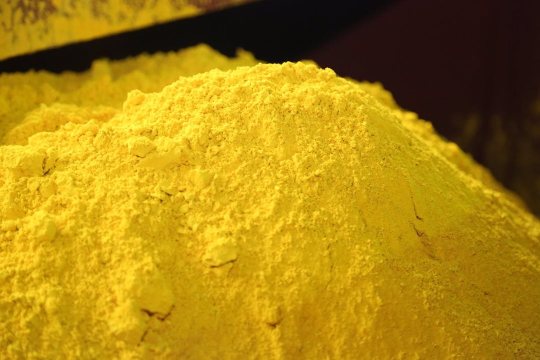
Uranium contains about 18 million kCal/gram (those are food Calories; capital C), or about 18 billion calories/gram (those are heat calories). One pound of fat is about 3500 kCal or about 3500000 cal, so 1 gram of Uranium would result in about 5,000 pounds worth of fat when comparing energy to energy ☢️
📷: Kazatomprom
#uranium#science#scientists#scientific illustration#science memes#science and technology#science acu#science acumen
98 notes
·
View notes
Text

Astronomers have used archived data from the Keck II telescope in Hawaii to observe Uranus' infrared aurora for the first time. The planet’s atmosphere is mixing with particles, producing a newly discovered infrared aurora.
Read more: https://rb.gy/z3ngw
#wikione x#social media#technology#space exploration#liminal spaces#deep space nine#study space#little space#space#space Advances#scientific study#mad scientists#scientific illustration#mad scientist#science#science and technology#science adventure#science Acumen#astronaut#astro observations#astronomy#astro community#astro notes
37 notes
·
View notes
Link
The University of Toronto researchers have explored the potential of Chemical Language Models (CLMs) to thrive as Biological Learning Models. In contrast to popular Protein Language Models that learn from protein sequences, CLMs can learn atomic-level representations of proteins and also learn protein backbones and natural amino acid structures, as well as the primary sequence patterns in the training sets. The study demonstrates CLMs’ capability to generate proteins having unnatural amino acids and novel protein-drug conjugates and thereby displays the prospects of expanding the domain of biomolecular design altogether and augmenting the representations of the combinatorial space of biology and chemistry.
Proteins are the workforce of the cell, and the entire cellular machinery is essentially protein-dependent. The sophisticated functionality of the protein is bestowed by the three-dimensional structural conformation of the protein. Envisaging protein structures empowers scientists to comprehend the mechanisms of cellular processes. Accordingly, perturbations in protein expression directly affect the cell’s physiology and result in disease conditions. For these reasons, proteins are the most conceivable and capitalized targets for docking drug molecules and initiating drug-induced favorable modifications, also because modulation of nucleic acids through drugs in order to achieve desired results is rarely feasible.
Exploration of all these vibrant areas of life sciences starts with the same conventional requirement, which is to get acquainted with the structures of proteins. After the protein is isolated following an elaborate procedure, the next step is to understand the protein’s sequence and structure. The wet lab experimental approaches like X-ray crystallography, NMR, and cryo-EM have assisted in these tasks for decades. With the advent of computer-aided technologies, numerous attempts have been made to decrypt protein’s structural figures. Paving breakthroughs in Artificial Intelligence (AI) technology advancements, Language Models are now one of the greatest trending and leading providers and propellers of modeling proteins’ structures in silicon.
Continue Reading
#bioinformatics#cheminformatics#llms#clm#artificial intelligence#bioengineering#science and technology
49 notes
·
View notes
Text
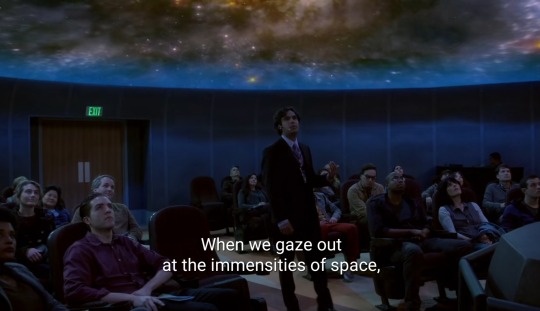


The Big Bang Theory, S11 EP14
#the big bang theory#sitcom#comedy#universe#quotes#dark academia#infj girl#infj feelings#lines#words#science#intj#intp#entp#isfp#kunal nayyar#leonard hofstadter#sheldon cooper#rajesh koothrappali#science and technology#positivity#positive quotes#happiness#epiphany
308 notes
·
View notes
Text
"Namibia is the driest country in Sub-Saharan Africa, and home to two of the world’s most ancient deserts, the Kalahari and the Namib. The capital, Windhoek, is sandwiched between them, 400 miles away from the nearest perennial river and more than 300 miles away from the coast. Water is in short supply.
It’s hard to imagine life thriving in Windhoek, yet 477,000 people call it home, and 99 per cent of them have access to drinking water thanks to technology pioneered 55 years ago on the outskirts of the city. Now, some of the world’s biggest cities are embracing this technology as they adapt to the harshest impacts of climate change. But Namibia leads the way.
How did this come about? In the 1950s, Windhoek’s natural resources struggled to cope with a rapidly growing population, and severe water shortages gripped the city. But disaster forced innovation, and in 1968 the Goreangab Water Reclamation Plant in Windhoek became the first place in the world to produce drinking water directly from sewage, a process known as direct potable reuse (DPR).
That may sound revolting, but it’s completely safe. Dr Lucas van Vuuren, who was among those who pioneered Windhoek’s reclamation system, once said that “water should not be judged by its history, but by its quality”. And DPR ensures quality.
This is done using a continuous multi-barrier treatment devised in Windhoek during eight years of pilot studies in the 1960s. This process – which has been upgraded four times since 1968 – eliminates pollutants and safeguards against pathogens by harnessing bacteria to digest the human waste and remove it from the water. This partly mimics what happens when water is recycled in nature, but Windhoek does it all in under 24 hours...
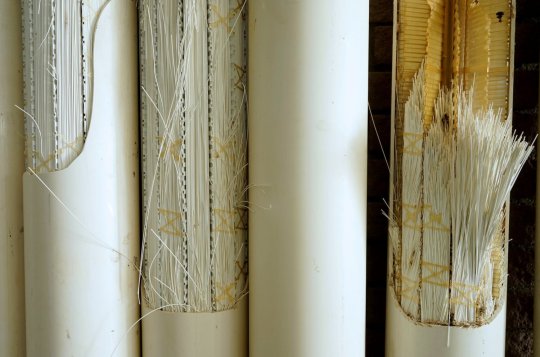
Pictured: These ultrafiltration membranes help to remove bacteria, viruses and pathogens. Image: Margaret Courtney-Clarke
“We know that we have antibiotics in the water, preservatives from cosmetics, anti-corrosion prevention chemicals from the dishwasher,” Honer explains. “We find them and we remove them.”
Honer adds that online instruments monitor the water continuously, and staff ensure that only drinking water that meets World Health Organisation (WHO) guidelines is sent to homes. If any inconsistencies are detected, the plant goes into recycle mode and distribution is halted until correct values are restored.
“The most important rule is, and was, and always will be ‘safety first’,” says Honer. The facility has never been linked to an outbreak of waterborne disease, and now produces up to 5.5m gallons of drinking water every day – up to 35 per cent of the city’s consumption.
Namibians couldn’t survive without it, and as water shortages grip the planet, Windhoek’s insights and experience are more important than ever.
Interest from superpowers across the globe
In recent years, delegations from the US, France, Germany, India, Australia, Singapore, and the United Arab Emirates have visited Windhoek seeking solutions to water shortages in their own countries.
Megadrought conditions have gripped the US since 2001, and the Colorado River – which provides 40 million people with drinking water – has been running at just 50 per cent of its traditional flow. As a result, several states including Texas, California, Arizona and Colorado are beginning to embrace DPR.
Troy Walker is a water reuse practice leader at Hazen and Sawyer, an environmental engineering firm helping Arizona to develop its DPR regulations. He visited Windhoek last year. “It was about being able to see the success of their system, and then looking at some of the technical details and how that might look in a US facility or an Australian facility,” he said. “[Windhoek] has helped drive a lot of discussion in industry. [Innovation] doesn’t all have to come out of California or Texas.”

Pictured: The internal pipes and workings of Namibia's DPR plant. As water becomes scarcer in some parts, countries are looking to DPR for solutions. Image: Margaret Courtney-Clarke
Namibia has also helped overcome the biggest obstacle to DPR – public acceptance. Disgust is a powerful emotion, and sensationalist ‘toilet to tap’ headlines have dismantled support for water reuse projects in the past. Unfortunately, DPR’s biggest strength is also its biggest weakness, as the speed at which water can re-enter the system makes it especially vulnerable to prejudice, causing regulators to hesitate. “Technology has never been the reason why these projects don’t get built – it’s always public or political opposition,” says Patsy Tennyson, vice president of Katz and Associates, an American firm that specialises in public outreach and communications.
That’s why just a handful of facilities worldwide are currently doing DPR, with Windhoek standing alongside smaller schemes in the Philippines, South Africa and a hybrid facility in Big Spring, Texas. But that’s all changing. Drought and increased water scarcity worldwide are forcing us to change the way we think about water.
Now, the US is ready to take the plunge, and in 2025, El Paso Water will begin operating the first ‘direct to distribution’ DPR facility in North America, turning up to 10m gallons of wasterwater per day into purified drinking water – twice as much as Windhoek. San Diego, Los Angeles, California, as well as Phoenix, Arizona are also exploring the technology."
Of course, DPR is not a silver bullet in the fight against climate change. It cannot create water out of thin air, and it will not facilitate endless growth. But it does help cities become more climate resilient by reducing their reliance on natural sources, such as the Colorado River.
As other nations follow in Namibia’s footsteps, Windhoek may no longer take the lead after almost six decades in front.
“But Windhoek was the first,” Honer reminds me. “No one can take that away.”"
-via Positive.News, August 30, 2023
#namibia#africa#desert#water shortage#water conservation#dpr#potable water#water recycling#clean water#drought#united states#colorado river#science and technology#sanitation#good news#hope
2K notes
·
View notes
Text
Designer knew what they were doing 🤣
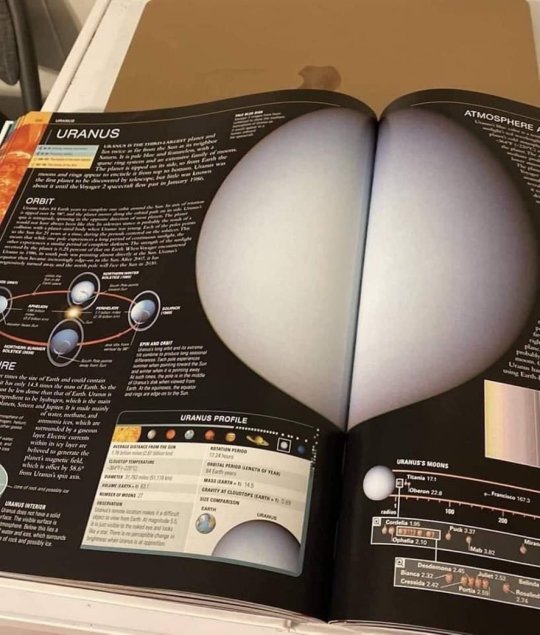
#planet earth#earth#science and technology#space science#star wars#study space#wikimedia commons#wikinley#wikipedia#earth from space#spacecraft#space exploration#outer space#deep space nine#little space#liminal spaces#space#astro observations#astro notes#astro community#astronomy#solar system#uranus in taurus#science acumen#space advances#space adventures
38 notes
·
View notes
Text
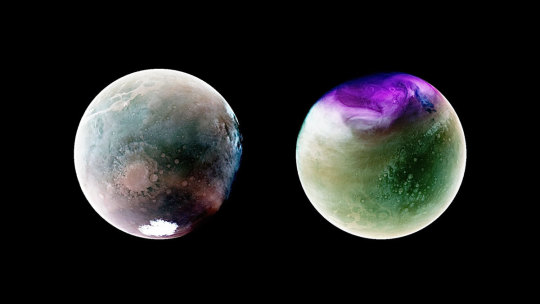
Stunning ultraviolet images of Mars captured by NASA's MAVEN spacecraft, offering scientists new understanding of the planet's atmosphere by rendering atmospheric ozone, clouds, and hazes in different colors. How far we've come from Étienne Léopold Trouvelot's pioneering 19th-century depictions.
521 notes
·
View notes
Photo
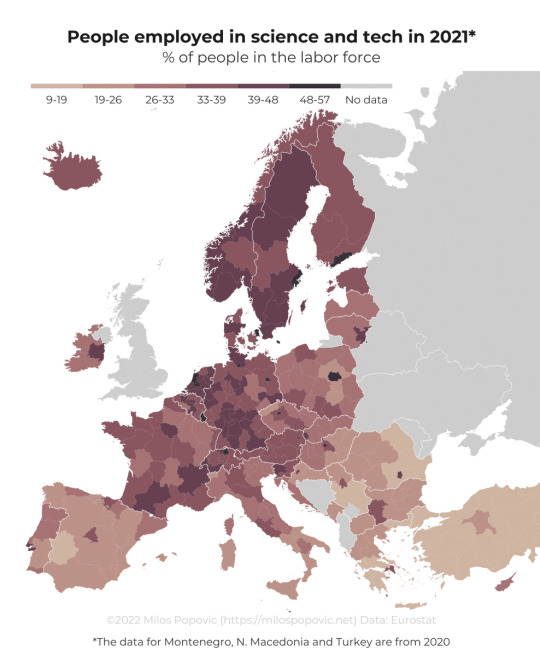
Percentage of people employed in science and tech in Europe.
by @milos_agathon
126 notes
·
View notes
Text

Via print:

#art#scifi#cyberpunk#sci fi#science fiction#digital art#aesthetic#scifiart#futuristic#scifi art#scifi girl#scifi aesthetic#science and technology#sciencefiction#science fantasy#science fiction art#digital artist#digital drawing#digiral art#digital illustration#digital painting#queen#cult#mega cities#scifi city#future city#distant lands#planets#robot art#robotics
19 notes
·
View notes